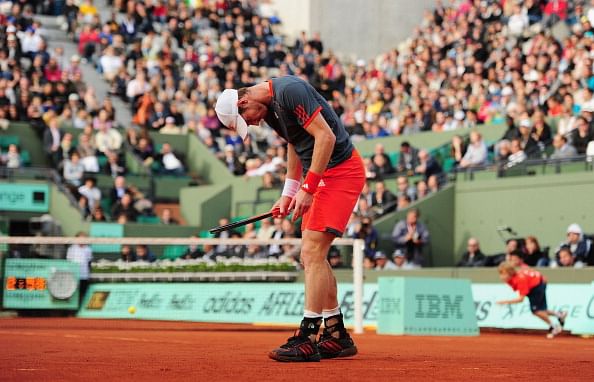
Body language and its significance in sports

Body language forms such an important and integral part of any sport. As much as a positive body language boosts a player’s morale, a negative body language gives signals to the opponent and makes the player further vulnerable to attack and ultimately destruction.
How many times have we seen an Usain Bolt showing off a relaxed and composed self before a race and even engaging the crowd with his histrionics? Then he speeds away to glory and the world is left trailing in his wake! Or take the example of a precocious Nadia Comaneci cheerfully and confidently gliding through the air to produce some of the most awe-inspiring performances. Or consider a Yelena Isinbayeva contemplating with her pole in hand and concentrating on the bar with piercing eyes before soaring gleefully to another world record.
These are images that have stuck in our minds and engraved a deep impression. Each in its own way exhibits a positive body language of the sportsperson concerned, which is perhaps the best way to intimidate your opponent. It is often said “body language doesn’t talk; it screams.” True, your attitude, gait and countenance mirror your inward self. If the opponent gets the slightest peek into your already crumbling and disintegrating world, you are done to death. If you are still able to demonstrate your iron will, your opponent knows he has few seconds before getting crushed.
Coming to the world of tennis where every week can alter the fortunes of a player, it is indeed a mental sport as much as it is physical. A single point has the fantastic ability to propel you to superstardom or drag you into the deepest of dungeons. Where a player is required to grind day in and day out, the significance of body language magnifies.
Haven’t we seen how a Serena Williams staring into the jaws of defeat, steadies her ship and ultimately romps home? Her entire approach becomes radically different – sedate, expressionless and visibly with no sign of frustration. Perhaps the opponent is already defeated in the mind on witnessing the transformation under the most dire circumstances.
How does she manage to do it so often? Serena has admitted to talking to her alter ego and pumping herself up. Even if it doesn’t work initially, a positive body language conveys to the mind that the player is growing in confidence which eventually builds the mental fortitude.
Similarly, a negative body language can hurtle you down the paths of gloom and disenchantment. A picture of tension, near-heartbreak, cluelessness and total disarray – these are enough fodder for the already confident opponent to bring about what we call as a ‘choke’.
Consider Petra Kvitova who was the top seed at last week’s Katowice Open. In the face of Roberta Vinci’s barrage of powerful forehands and tactical backhand slices in the first set, she remained upbeat and was twice a game away from capturing the first set. But once she opened the tiny door of opportunity and let the Italian cruise in the first set tie-break, she lost it then and there.
In the second set, there wasn’t even a semblance of a fight as Petra was a pale shadow of herself. She looked jaded, dispirited, befuddled and very much directionless. The worst was that between games, she looked even close to breaking down – a cardinal sin for any sportsperson. By putting up such an overwhelmed picture, she gave her opponent a basketful of chances to attack and complete a rout.
And this isn’t the first time the Czech has exhibited such a negative body language. In one of her most hapless displays till date, she even quietly sobbed while being match point down during her second round defeat to the promising Laura Robson at the Australian Open this year.
Petra’s attitude reminds one of the nightmarish meltdown Vera Zvonareva had one fine autumn evening in New York City. Six chances she had to close out her fourth round match against Flavia Pennetta at the 2009 US Open, but failed. What followed in the decisive set was as deplorable as obnoxious. Zvonareva lost complete control of her senses, unable to bring about the efficacy in her game and she just let it flow. The world watched in horror as the egregious Russian produced a most appalling display of frustration and Pennetta soared in confidence. When Zvonareva covered herself up in a towel after the bagel, the damage had been done, the humiliation complete.
Much like the match described above, a player’s body language can be effective in bringing about the turning point in any match. Even if you can’t find the rhythm, putting up or even faking a brave face in moments of crisis can inject fear into your opponents. Perhaps that’s what makes good players great and great players legends.